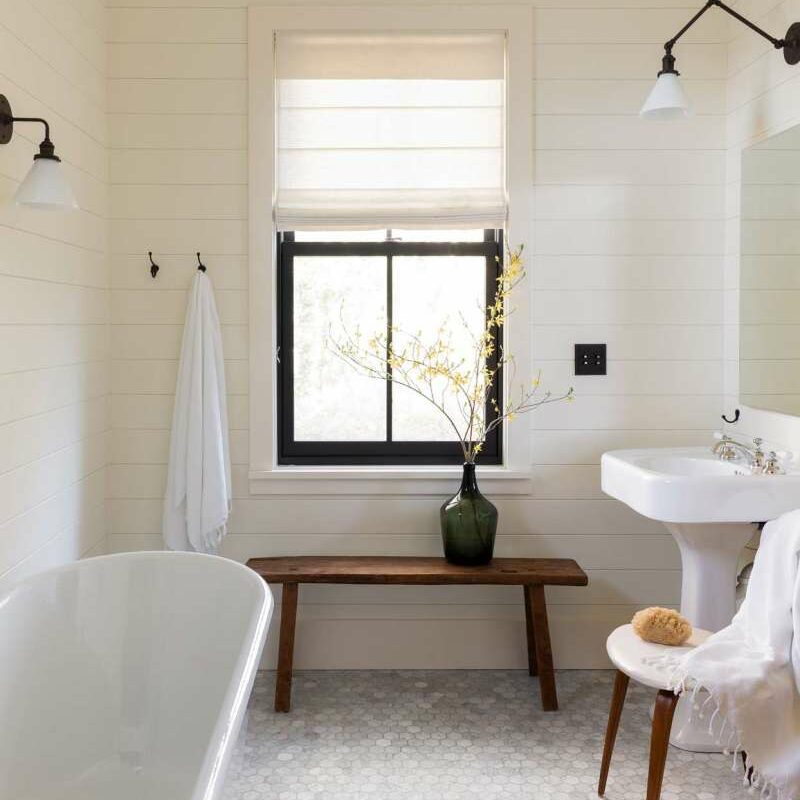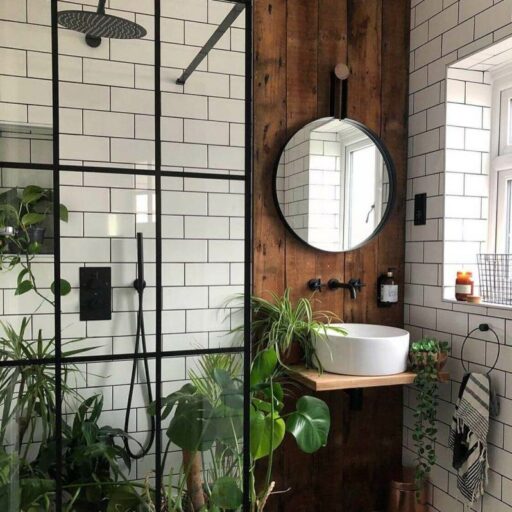What Is The Best Flooring For Bathrooms – When choosing bathroom flooring, homeowners often look for beautiful, durable materials that fit their style. However, there is one major difference between bathroom floors and floors in other rooms: Bathroom surfaces must be waterproof. Choosing flooring materials that meet these requirements should be a top priority. In this article, we identify the most common materials and list their pros and cons to help you choose the right flooring for your bathroom.
Water may splash from the sink. Toilets may overflow. The steam from a shower often covers the entire bathroom, possibly more than once a day. Damp bathrooms are the norm rather than the exception, and water can wreak havoc on the wrong floor. Designing a beautiful bathroom may be your goal, but keeping it waterproof should be your primary concern.
What Is The Best Flooring For Bathrooms
There are so many options for flooring – it can be hard to know where to start. Below, we’ll take a look at six popular bathroom flooring options and look at the pros and cons of each.
Luxury Vinyl Tile Floors For A Bathroom: The Ultimate Guide
There’s a reason porcelain and ceramic are classic bathroom floorings. In addition to being waterproof and easy to clean, it’s also relatively inexpensive and can mimic the look of more expensive materials like natural stone. Ceramic tiles are made from rough kiln-fired clay and are coated with a waterproof glaze when used in bathrooms. Porcelain is a type of ceramic made from a more refined clay that is fired at a higher temperature, making it more durable and less porous. However, this makes porcelain more brittle and therefore more prone to chipping and cracking.
When it comes to style, porcelain and ceramics come in countless sizes, shapes, textures, and colors, which means your design options are nearly limitless. Laying tiles yourself is also relatively easy – although a bit time-consuming. Tile is more difficult to cut and install, but with the right tools and enough patience, it can still be a DIY job. Watch the video below to learn how to lay tile yourself.
Porcelain and ceramic are cool to the touch but are also very conductive when installed with radiant heat. If you want a bathroom with underfloor heating, porcelain and ceramic are the most popular options.
Disadvantages of this material? They can be slippery. Choose tiles with a textured surface or smaller tiles that require more grout, which will provide better traction. Tile prices also vary slightly based on size and quality. For small tiles, the material cost is low, but the installation cost is high. While ceramic tiles and ceramic tiles are both easy to maintain, the grout between them requires regular cleaning and reapplication.
Best Flooring For Bathrooms — Timba Floors & Boards
Durable and attractive, natural stone always gives a luxurious feel, but it’s expensive and not completely waterproof. Softer materials like travertine and limestone will need to be resealed every few years, while harder stones like marble and granite can last up to five years before being resealed. If you can afford natural stone and don’t mind replacing your flooring from time to time, this is one way to increase the resale value of your home.
Stone, like porcelain and ceramics, is cold to the touch and is a very slippery material. We recommend considering stone that has been sandblasted rather than polished cut, chipped or textured. There are also naturally textured stones such as slate – but keep in mind that textured and honed surfaces are more porous and require more frequent resealing. Stone is heavy and difficult to work with, so it is best installed by professionals.
Vinyl is a very popular bathroom flooring material because it is waterproof, affordable, and easy to install. This results in a variety of styles and designs, as vinyl can be tinted and patterned to mimic the look of more expensive materials such as porcelain, wood, and natural stone. The material comes in the form of boards, planks or tiles. However, sheets are the best choice for bathroom vinyl flooring because the installation is nearly seamless, making it waterproof.

However, vinyl planks and tiles generally offer more design variety and a more luxurious look than metal planks. There are two types of vinyl planks: wood plastic composite (WPC) and stone plastic composite (SPC). Both have waterproof cores, but WPC is thicker and softer underfoot, while SPC is more durable and shockproof.
Vinyl Floor Bathroom Ideas You’ll Love
Although vinyl is durable, it can develop bumps, gaps, or waves over time. Vinyl can also be difficult to repair if punctured by a sharp object – if the film is punctured, the entire film may need to be replaced. And because this material is so cheap, it won’t increase the resale value of your home as much as more expensive materials.
Laminate is often confused with vinyl, but the former has a wood chip base, making it an inferior material for bathroom flooring. When the wood chip substrate comes in contact with water, it absorbs the moisture and forms air bubbles, which means the flooring will eventually need to be replaced. We do not recommend laminate flooring for bathroom floors.
Concrete bathroom floors are commonly found in homes with slab foundations. You can also choose to install a concrete slab or concrete pad for your bathroom floor. Panels can be stained, polished, embossed or painted to create an elegant look that perfectly matches the modern aesthetic. It can also be stained and textured to look like wood.
The advantages of concrete are water resistance, durability and relatively low cost. Staining or stamping concrete is not expensive, and when you consider the longevity of this type of flooring, it becomes even more cost-effective. Additionally, if you change your mind or renovate your bathroom later, most other flooring materials can be installed over concrete without having to remove it.
Best Tile Options For Your Bathroom Floor
However, concrete is cold, hard to the touch, and very slippery on smooth surfaces. It’s also not a good choice for a radiant heating system. If you are considering using concrete slabs for your bathroom floor, leave some texture in the finish to facilitate adhesion. While water will not damage concrete, the material requires regular refinishing to prevent stains. Pouring concrete for a bathroom floor isn’t a DIY job either if you want a finished look.
While wood and water don’t typically mix, engineered wood plywood bases resist moisture well. If you need solid wood flooring in your bathroom, this is your best choice. Engineered wood looks like real wood because the top layer is made of hardwood veneer.
However, this is a relatively expensive material. Another potential disadvantage is that engineered wood materials are easily damaged and can only be sanded and refinished once or twice before the veneer is applied. Still, it’s a viable option if you’re careful and opt for professional installation. Hardwood materials work best in well-ventilated bathrooms where there won’t be much water spilling directly onto the floor. Therefore, it is not a good choice for children’s bathrooms.

On the other hand, solid hardwood is never a good idea for a bathroom. It is highly sensitive to moisture and, even with a protective coating, may warp and rot over time.
Design Experts Explain How To Choose Bathroom Flooring
If durability is important to you, consider cork as a flooring material. Waterproof, naturally insulating and comfortable on your feet, it’s a great choice for the bathroom. Natural texture ensures a non-slip surface. Additionally, cork can have some beautiful and unique grain patterns.
While cork is naturally resistant to mold and mildew, it is not waterproof and may warp if exposed to high humidity or standing water. Like engineered wood, cork is best suited for low-traffic bathrooms used by adults. To protect your cork flooring from moisture, reseal it every few years.
Which bathroom flooring material you choose depends on your needs, budget, and style preferences. Ceramic and porcelain combine a classic look with high water resistance. Vinyl flooring is an affordable option that can be easily installed by most DIYers. If you have more wiggle room in your budget, natural stone is a luxury option that will retain its value over time. Less common options like concrete, engineered wood and cork require regular renovation and maintenance, but in the right bathroom they can provide a unique look and feel.
Get the latest Old House news, trusted tips, tricks and smart DIY projects from our experts – straight to your inbox. Believe it or not, your bathroom is one of the most important rooms in your home. Bathrooms are a basic requirement for daily comfort and an essential feature of any home, whether you are using it for the long term or considering resale. So it’s no surprise that bathrooms are often top of mind when renovating, even more so than when buying your first home.
Bathroom Floor Tile Ideas To Transform A Small Space
However, these important spaces require some special considerations when furnishing them

